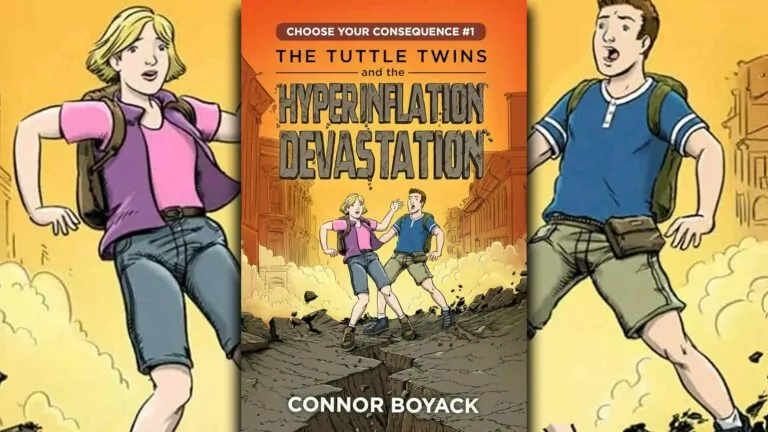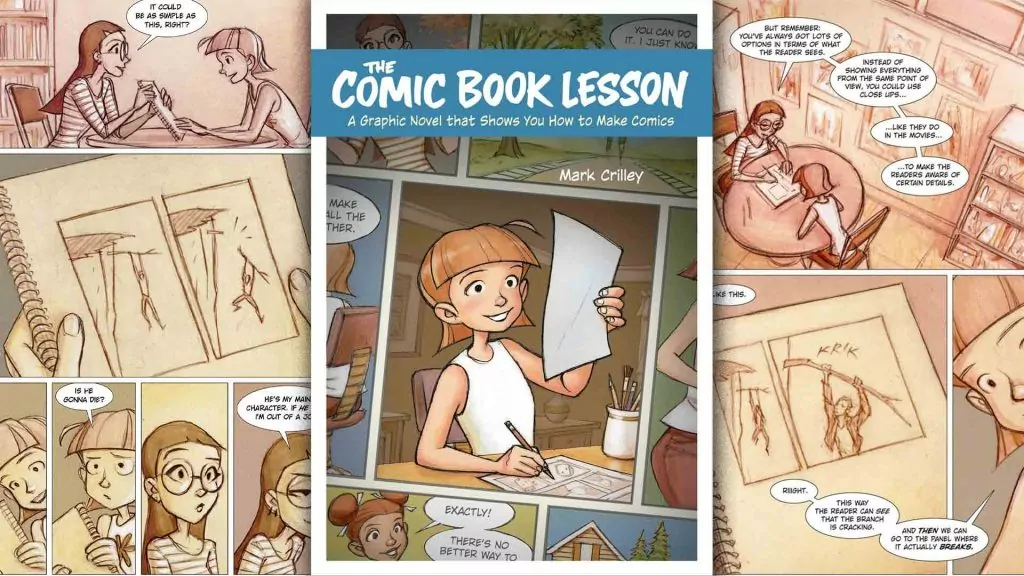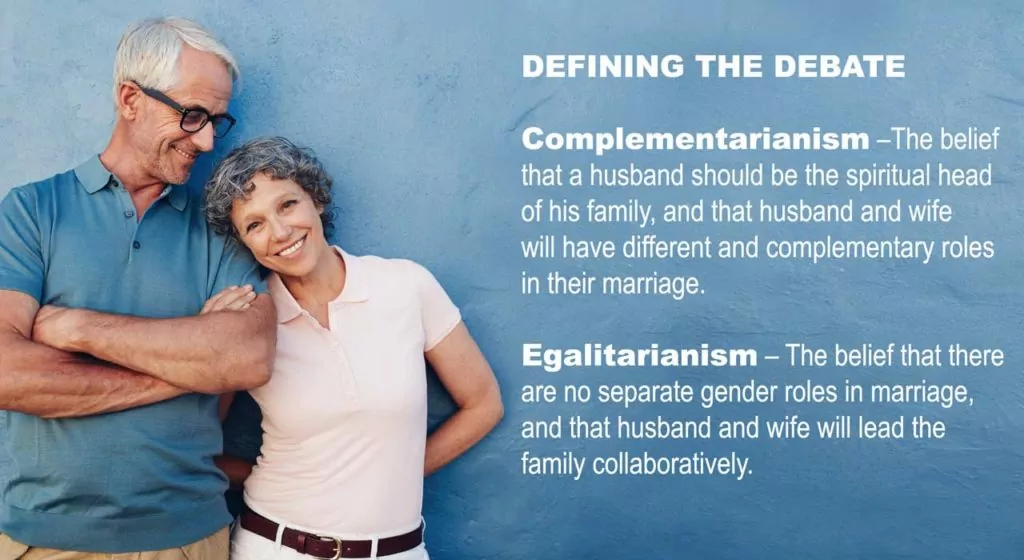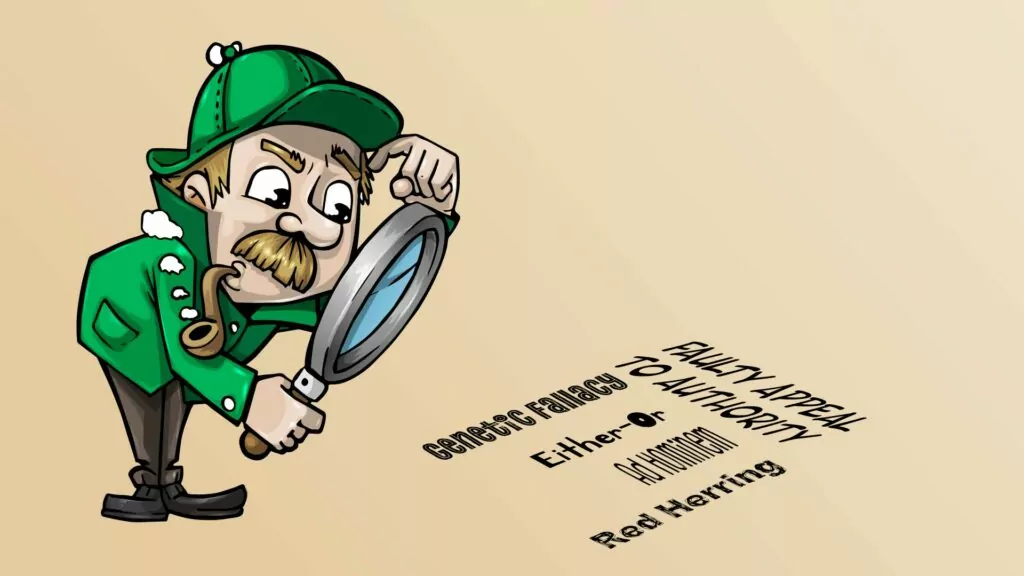by Connor Boyack
400 pages / 2019
Remember those “Choose Your Own Adventure” books kids loved back in the 1980s? Readers would be brought to a fork in the road, given two options to choose from and if they chose Option A, they would be told to go to one page, and if they chose Option B then they would be directed to another. Afterward, they would continue on their chosen track with the adventure continuing to branch repeatedly thereafter.
In The Hyperinflation Devastation, author Connor Boyack has taken that concept and expanded on it, creating a 400+ page “Choose Your Consequence” adventure to teach teens various lessons about economics.
In this, the first book in the series, Emily and Ethan Tuttle, a pair of 15-year-old twins, head out on their own to the small South American country of “Allqukilla.” If 15 strikes you as young to be out without parents, I’m with you. However, these two are a particularly independent pair who have spent the last year planning and saving for this trip. They want to go to Allqukilla to check out the country’s ancient ruins.
But is it to be? Right after their plane arrives, they see local news reports warning about an impending earthquake and it’s here that readers face their first choice. Are the Tuttle twins going to have an incredibly short adventure and head back on the very next plane, or are they going to go on to their hotel? Of course, no reader is going to take the cautious route, so onward and forward the adventure continues. While exactly what happens depends on the choices a reader makes, the twins will encounter that earthquake, and then, with power disrupted, they’ll have to deal with roads in bad repair, hyperinflation, a lack of available food and water, and no cell phone service, as the two figure out their way home.
The author’s economic outlook is a small government, libertarian one, which comes out in the lessons the twins learn. So, for example, in one story branch, they end up in a small village in the hills that still has power because these villagers have never relied on the government to provide it. In another branch, they encounter some not-so-warm-hearted help – entrepreneurial sorts who will do them good…for a price. The twins sometimes get entirely altruistic help, but the point is, they also get help from people who wouldn’t otherwise be helpful, except that it is in their own self-interest to do so. The lesson here is that the free market is important because it gives people a motive to provide things other people want.
While this is intended as an educational story, Boyack doesn’t beat readers over the head with the lessons he’s trying to teach. Only once, in the eight or so different story arcs does a character offer up a prolonged economics lecture. But even then, it isn’t too long.
CAUTIONS
The one caution I would offer deals not with this book, but with the author. He writes from a generally Judeo-Christian, libertarian perspective. Often times, those two perspectives can match up quite nicely since both Christians and libertarians recognize that the government shouldn’t try to be God. Thus we both believe in some form of smaller, limited government, which sets us apart from the many who call on the government to solve whatever problems they face.
But in some of Boyack’s other books, his libertarian perspective comes in conflict with his Judeo-Christian perspective. In The Tuttle Twins Learn About the Law (one of the Tuttle Twins picture books he’s written for younger readers) he teaches readers that governments gain their authority from people, and not God. Based on that assumption the author argues that governments should only be able to do what people are able to do, therefore just as it would be wrong for a person to forcibly take money, so too the same must be true of government. But this simply isn’t true. God has empowered governments to do some things which individuals must not do, and taxation is one of them (Luke 20:25, 1 Peter 2:13-14).
The libertarian perspective in Hyperinflation Devastation is more restrained, and thus in keeping with a Christian worldview that understands God as distributing powers and responsibilities not simply to the state, but to parents, and the church, and individuals too.
CONCLUSION
I would recommend this for any kid from 10 to 15. The adventure is a solid one, and the Choose-Your-Own-Adventure component will grab their attention.
Yes, this is an economics lesson, but it is a generally subtle presentation that never gets in the way of the story. That allows most kids, whether they are politically-inclined or not, to enjoy this. But because the economics angle is so very different from what they are reading in other books, it may well spark an interest in learning more about money, inflation, politics, and more.
It may interest parents to know there are other titles in this “Choose Your Consequence” series so far, but as I haven’t read them, I can’t recommend them as of yet.
There is one mistake in the book, on page 388, where we are directed to Page 335 but should be directed to Page 111. I recommend some of the Tuttle Twin pictures books on my personal blog here.













